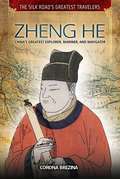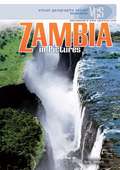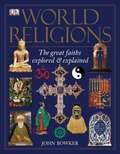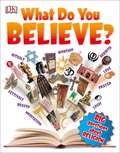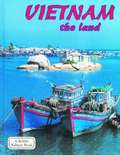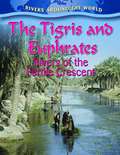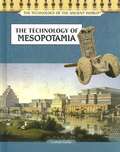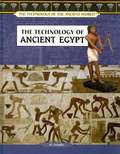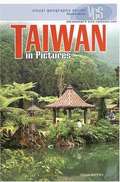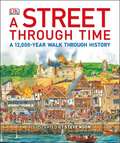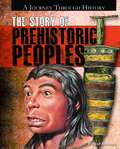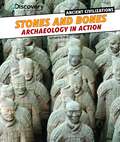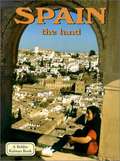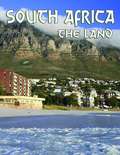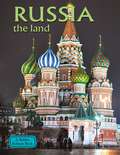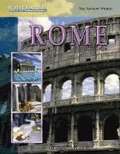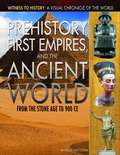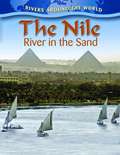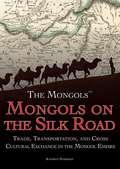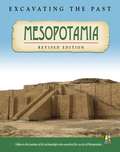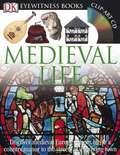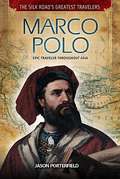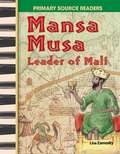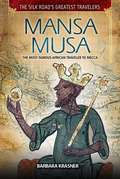Special Collections
District List: NYC Core Curriculum 6th - Social Studies
Description: The New York City Core Curriculum program aims to provide a high-quality curricula to NYC students through a seamless instructional program across grades and subjects. This list has been curated by NYCDOE for 6th Grade Social Studies materials. #nycdoe
- Table View
- List View
Zheng He
by Corona BrezinaZheng He was the commander of a vast Chinese fleet known as the treasure fleet. In the early fifteenth century, he led the fleet on seven journeys throughout the South China Sea and Indian Ocean, serving as ambassador to the barbarian nations in need of a civilizing influence. Under Zheng He’s command, the Chinese treasure fleet achieved one of the most impressive maritime displays the world had ever seen. This engaging volume covers the fleet’s travels, which covered more than 40,000 miles and included sea routes along the Silk Road, to cities and kingdoms from southern Asia to east Africa.
Zambia in Pictures
by Bella WatersDescribes the geography, climate, wildlife, natural resources, history, politics, culture, economy, and government of Zambia.
World Religions
by John BowkerThe Evolution of Major Faiths World Religions looks at the beliefs and practices of many different religions, from the ancient Egyptians to Zoroastrianism -- the oldest "living" religion -- and the great faiths practiced today. Each of the major faiths -- Christianity, Judaism, Hinduism, Buddhism, Jainism, Sikhism, and Islam -- is examined in detail through its sacred texts, epic imagery, key beliefs, and religious artifacts. The distinctive identities of different faiths are explored in World Religions by studying the main principles and thinking of each religion. The book's superb reproduction allows the symbolism and meaning in religious imagery and iconography to be revealed in great detail. Accessible and far-reaching, World Religions will engage the whole family as much as the serious student.
What Do You Believe?
by Dorling Kindersley Publishing StaffReligion, morality, science, and the afterlife are complex and often misunderstood subjects. What Do You Believe? is a dynamic and clear text that brings together a variety of ideas of on religion. They are clearly presented for children to understand in a clear, unbiased text, and key concepts are broken down into manageable chunks of information with keywords that are simply explained. What Do You Believe? looks at basic teachings, practices of world faiths, philosophy, and more, and delves into the meaning and purpose of life. This book promotes understanding, tolerance, and respect for people whatever they believe.
Vietnam - The Land
by Bobbie KalmanDescribes the geography, climate, history, cities, agriculture, transportation, business and trade, and wildlife of Vietnam.
The Tigris And Euphrates
by Gary MillerThe Tigris and Euphrates rivers surround a region once known as Mesopotamia, the "cradle" of ancient civilizations that included Sumer, Babylonia, and Assyria. This fascinating book follows both rivers from where they begin in Turkey, travel down through northern Syria and Iraq, and join to form the Shatt al Arab before emptying into the Persian Gulf.
The Technology Of Mesopotamia
by Graham FaiellaThe Mesopotamian civilization was the first to build cities, and their inventions and technologies evolved with their urban life. They learned how to build all kinds of buildings, from ordinary houses to royal palaces. In this compelling narrative, students learn about some of Mesopotamia s most important inventions and how many of these inventions survived and continue to be used today.
The Technology of Ancient Egypt
by M. SolodkyStudents may have heard of papyrus and the pyramids, but this insightful book outlines many of the lesser known technological advancements that were the product of a fiercely creative, intelligent, and inventive ancient society. Covering such things as mummification and elaborate tombs, The Technology of Ancient Egypt is sure to keep students on the edge of their seats. Some scholars believe that more than half of the basic inventions on which today's world depends came from ancient China. The ancient Chinese made the first iron plows in the world and also invented the wheelbarrow, the seismograph, and many other invaluable things. Readers will learn about the many technologies that the Chinese created or improved upon. Supports history-social science content standards mandating student understanding of the origins and influence of agricultural, technological, and commercial developments in key ancient civilizations. Broadens student understanding of the relationship among science, technology, and society by highlighting how major scientific and mathematical discoveries and technological innovations have affected societies throughout history.
Taiwan in Pictures
by Alison BehnkeAn overview of Taiwan's geography and history, along with an exploration of the political, economic, and cultural landscape of this Asian island nation off the coast of China
A Street Through Time
by Dorling KindersleyThis book views a street by the river through the ages and how it has evolved.
The Story of Prehistoric Peoples
by Philip BrooksDescribes the lives of early prehistoric peoples, from the use of tools and the migration of early hominids around the world to human life during the Ice Age, the domestication of animals, and prehistoric art.
Stones and Bones
by Kathryn SteeleDiscusses the work of archaeologists and describes the sites and artifacts they work with, including such things as ancient cities and burial grounds, temples, sunken ships, tools, and writing tablets.
Spain
by Noa Lior and Tara SteeleExplores Spain's varied geography from the Cantabrian Mountains in the north to the southern Sierras and the vast rivers and coastal regions of the Atlantic and Mediterranean.
South Africa - The Land
by Domini ClarkIn South Africa you can see some of the most fascinating animals in the world, amazing mountains with steep cliffs and flat tops that rise above deep gorges, waterfall carved caves and tunnels through rock, and areas of flat land that stretch farther than the eye can see.
Russia
by Greg NicklesDiscusses Russia's geography, history, ethnic groups, wildlife, climate, cities, economy, agriculture, transportation, and space program.
Prehistory, First Empires, and the Ancient World
by Markus HattsteinReaders will be intrigued by this stunning edition, which provides an overview of periods that are less readily studied in the classroom. Readers will be excited to experience prehistory, the Stone Age, first empires, and ancient worlds. With detailed images, this curated guide of the early parts of our civilization will make all study engaging and entertaining.
The Nile
by Molly AloianThe Nile is the world's longest river and the birthplace of one of the greatest civilizations of the ancient world.
This book takes readers along the "River in the Sand." Ancient Egyptians depended on the Nile's annual floods to deposit fertile soil for farming.
Today, more than 70 million people still grow crops in the river's basin and fish in its waters.
Mongols on the Silk Road
by Kathryn HarrisonStretching across Asia and into eastern Europe and northern Africa, the Silk Road opened the world to new ideas, products, and cultures. Because the Mongols controlled so much of the territory across this network of pathways, trade between east and west flourished, spreading silk, spices, technology, and languages. In addition, the Mongols were known for their different religious traditions, including Buddhism, Islam, and Zoroastrianism, which were also “transported” along the established pathways of trade. While traveling throughout the network could be treacherous, its cross-cultural exchange paved the way for modern globalization. This vivid and lively account places sets readers on a wondrous journey of discovery along the Silk Road.
Mesopotamia
by Jane ShuterMesopotamia hides many wonders, waiting to be discovered when you see what it takes to excavate the past.
Medieval Life
by Dorling Kindersley Publishing Staff and Andrew LangleyEyewitness: Medieval Life gives the reader an in-depth look at life from the end of the Dark Ages to the Renaissance in the 15th century, in both the town and the country, and for the peasants as well as the aristocracy. Featuring artifacts, costumes, furniture, and historical illustrations, Medieval Life is a unique and compelling introduction to the people and culture of the Middle Ages.
Marco Polo
by Jason PorterfieldUpon returning to his native Venice from a nearly 25-year journey through Asia, Marco Polo fueled the Western imagination with his tales about the splendors of the East. This lively biography follows Marco’s intrepid family as they navigate the spice stalls, caravansaries, and dangers that once populated the Silk Road and enter Kublai Khan’s Mongol court in China, where they served as advisors. Readers will learn about the Polos’ importance as cultural emissaries at a time of limited global exchange and how Marco’s account of their travels—whether fact or fiction—heralded the later golden age of exploration.
Mansa Musa
by Lisa ZamoskyMansa Musa was the king of Mali as it became one of the largest empires during the time of Musa's rule. Readers will discover the life of Mansa Musa in this appealing biography that uses vivid images, appealing maps, and stunning facts to engage children. A glossary and index work in conjunction with the easy-to-read text to teach readers about the Mali ruler, griots, Mali trade, Mecca, Malian religion, and other kings and queens
Mansa Musa
by Barbara KrasnerFrom Mali to Cairo to Mecca and beyond, Mansa Musa was known as the Lion of Mali. Now remembered as the richest person in history, his enormous wealth, legendary generosity, and lavish pilgrimage from Mali to Mecca made him a favorite of medieval Arab storytellers. However, the 14th-century leader also presided over one of the largest empires in the world during his time. This informative biography traces Mansa Musa’s life, following his magnificent caravan as he traversed what remained of the Silk Road routes to become a hajji and returned to transform Timbuktu into western Africa’s most famous cultural center.
